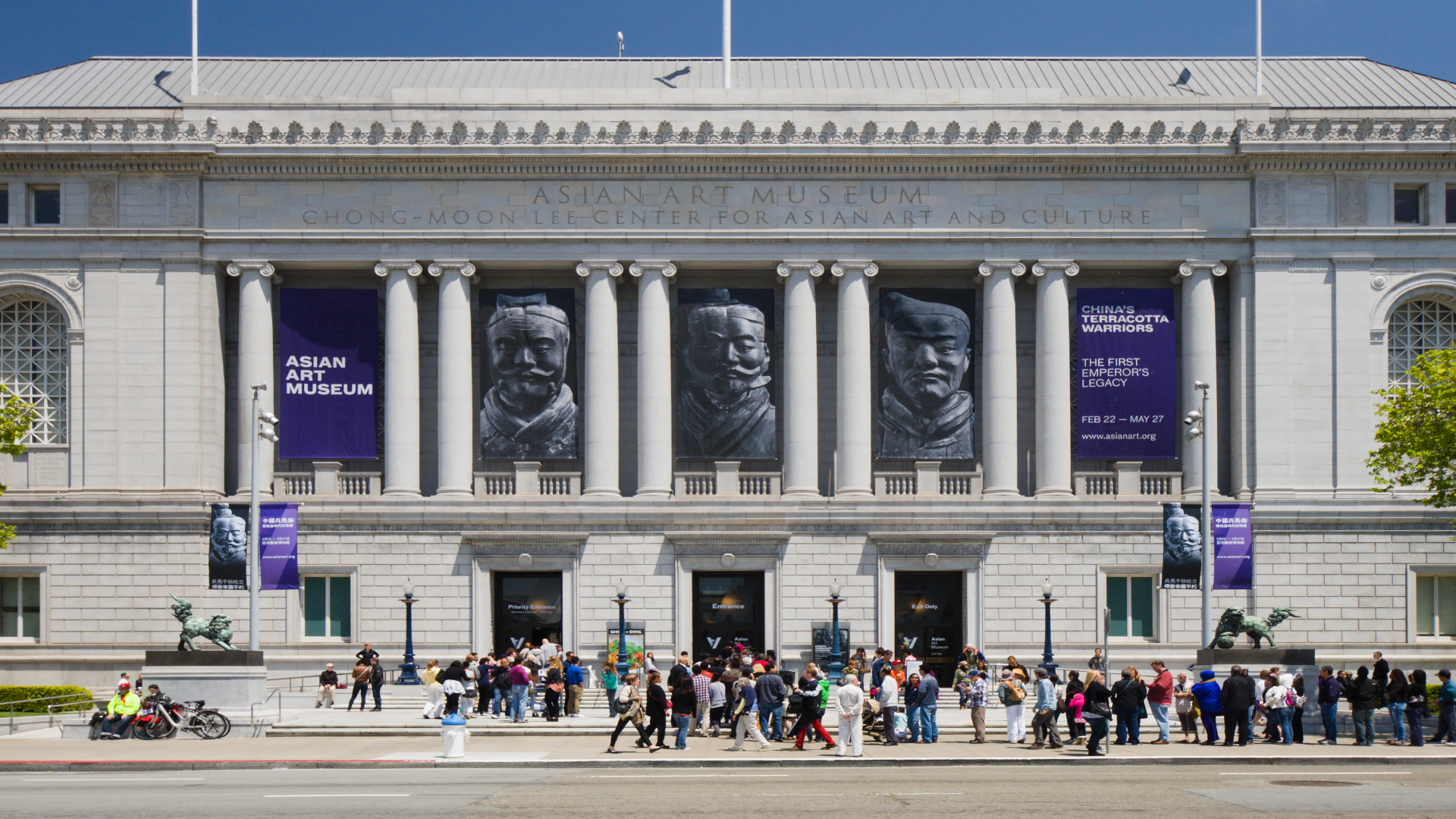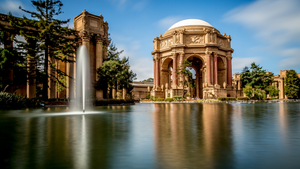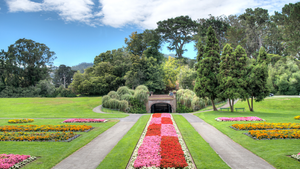
Asian Art Museum
The Asian Art Museum of San Francisco, located in the heart of the city, houses one of the world's most comprehensive collections of Asian art, featuring over 18,000 works spanning 6,000 years of history from various Asian cultures. Founded by Olympian Avery Brundage in the 1960s, this renowned institution offers visitors a panoramic journey through the artistic traditions of countries from Turkey to India and China to the Philippines.
The Origins of the Museum: Avery Brundage's Vision
Avery Brundage, a wealthy Chicago businessman and former Olympic athlete, played a pivotal role in establishing the Asian Art Museum of San Francisco. In the 1950s, Brundage offered to donate his extensive collection of Asian art to the city, with the goal of making "the Bay Area become one of the world's greatest centers of Oriental culture." His initial gift of nearly 8,000 artworks formed the nucleus of the museum, which opened in 1966 as a wing of the de Young Museum in Golden Gate Park. Brundage's collection was diverse, spanning the continent and including jades, bronzes, ceramics, scrolls, paintings, and textiles from various Asian cultures and historical periods. By the time of his death in 1975, Brundage had donated a total of 7,700 artworks to the museum, establishing it as a preeminent repository of Asian art in the United States. Despite Brundage's stated intention of creating a "bridge of understanding" between the U.S. and Asia, recent examinations have revealed that he held racist, sexist, and anti-Semitic views that contradict the museum's current mission and values.
Highlights from the Permanent Collection
The Asian Art Museum's permanent collection boasts an impressive array of masterpieces spanning six millennia and seven geographic regions. Highlights include world-class artworks, important historical pieces, and visitor favorites that captivate audiences time and time again. The collection encompasses a diverse range of mediums, including paintings, sculptures, ceramics, decorative arts, and textiles. Notable works include a cosmic Buddha Vairochana from the 13th-14th centuries, a portrait of Toyotomi Hideyoshi from 1599, and an imperial court overvest from the late 16th century. The museum's collection also features significant pieces from various Asian cultures, such as a 15th-century Korean Guardian King of the West and a 16th-century Indian painting depicting Radha and Krishna. These carefully curated highlights offer visitors a comprehensive glimpse into the rich artistic traditions of Asia, showcasing the museum's commitment to preserving and presenting the continent's cultural heritage.
Architectural Marvels: The Japanese Tea House
The Japanese tea house, or chashitsu, is a masterpiece of traditional architecture designed specifically for the tea ceremony. These structures embody simplicity, harmony, and a deep connection to nature. Typically small in size, ranging from 1.75 to 4.5 tatami mats, tea houses feature natural materials like wood, bamboo, and paper . Key elements include shoji windows, sliding doors covered with translucent washi paper, and tatami mat flooring . The nijiriguchi, a low crawl-through entrance, forces guests to humble themselves as they enter the sacred space . Inside, the tokonoma alcove serves as a focal point for displaying artwork or flowers . The surrounding roji garden, with its stone path and water basin, prepares guests mentally and physically for the ceremony . Modern interpretations, like Tokujin Yoshioka's Glass Teahouse, blend traditional concepts with contemporary design, creating innovative spaces that still honor the essence of the tea ceremony.
Avery Brundage's Art Collection
Avery Brundage's art collection formed the cornerstone of the Asian Art Museum of San Francisco, comprising over 7,700 objects that span a wide range of Asian cultures and historical periods. As a prominent collector of Asian art during the mid-20th century, Brundage amassed one of America's most significant collections of Japanese art with the assistance of scholar and connoisseur Rene-Yvon d'Argence.
The collection is notable for its diversity and quality, featuring a variety of mediums including ceramics, metal arts, sculpture, decorative arts, jade and stone carvings, paintings, theatrical arts, and arms and armament. Some of the highlights include:
Chinese ceramics, with a significant number originating from the renowned porcelain-producing city of Jingdezhen
Japanese artworks, including pieces by notable artists such as Shibata Zeshin and Itō Jakuchū
Ancient Chinese bronzes, such as ritual vessels dating back to the 11th-12th centuries BCE
Jade carvings, which form an important part of the Chinese art collection
Brundage's collection is particularly strong in Chinese art, with over 3,500 objects representing various dynasties and periods. It also includes significant holdings in Japanese, South Asian, West Asian, Himalayan, and Southeast Asian art.
The breadth and depth of Brundage's collection have made it a valuable resource for scholars and art enthusiasts alike. However, it's important to note that recent examinations have raised questions about the provenance of some objects and the ethical considerations surrounding their acquisition. The Asian Art Museum has initiated a series of conversations to critically examine Brundage's legacy and the history of the collection, addressing issues of race, colonialism, and power in both the founding of the museum and its subsequent history.
Despite the controversies surrounding Brundage's personal views and actions, his art collection remains a significant contribution to the field of Asian art in the United States. It continues to serve as a foundation for the Asian Art Museum's mission to promote understanding and appreciation of Asian cultures through art.
Iconic Brundage Collection Pieces
The Avery Brundage Collection at the Asian Art Museum of San Francisco contains numerous renowned pieces that showcase the breadth and quality of Asian art. Some of the most famous works include:
Rectangular flower pot with scene of immortals (1700-1800): This exquisite Chinese porcelain piece features intricate designs and depicts immortals, demonstrating the high level of craftsmanship from the Qing dynasty.
Dish with mandarin duck in lotus pond: This delicate porcelain dish showcases the Chinese artistic tradition of combining nature and symbolism, with the mandarin duck often representing fidelity in love.
Dish with design of floral scrolls (1662-1722): Dating from the Kangxi period of the Qing dynasty, this dish exemplifies the fine porcelain work for which Jingdezhen was famous.
Rug with design of lions playing with brocade balls and butterflies among flowers (approx. 1775-1825): This piece represents the textile arts in the collection, combining intricate patterns with symbolic imagery.
Jades from the neolithic period to the modern era: Brundage's collection includes an extensive array of jade pieces spanning thousands of years of Chinese history, showcasing the evolution of jade carving techniques and styles.
Bronzes: The collection features hundreds of bronze pieces, including ancient Chinese ritual vessels, some dating back to the 11th-12th centuries BCE.
Scrolls, paintings, and prints: These works represent various Asian artistic traditions, with pieces from China, Japan, and other cultures, offering insights into different periods and styles of Asian visual arts.
Ceramics: The collection boasts a wide variety of ceramic pieces from different Asian cultures, with Chinese ceramics being particularly well-represented.
While these pieces represent some of the highlights, it's important to note that the Brundage Collection comprises over 7,700 objects, spanning a wide range of Asian cultures, historical periods, and artistic mediums. The collection's strength lies not only in individual masterpieces but also in its comprehensive representation of Asian art history, making it a valuable resource for scholars and art enthusiasts alike.
The Asian Art Museum continues to showcase these works through various exhibitions and programs, fulfilling Brundage's vision of making the Bay Area a center for Asian art and culture, while also engaging in critical discussions about the collection's history and provenance.
Related Posts

Palace of Fine Arts
Nestled in San Francisco’s scenic Marina District, the Palace of Fine Arts is a must-visit destination for tourists and locals alike.

San Francisco's Historic Chinatown
San Francisco's Chinatown, the oldest in North America and one of the largest Chinese enclaves outside Asia, is a vibrant neighborhood that offers visitors a unique cultural experience.

Golden Gate Park
Golden Gate Park, a sprawling 1,017-acre urban oasis in the heart of San Francisco, offers visitors a diverse array of attractions, from world-class museums and lush gardens to recreational activities and hidden treasures.